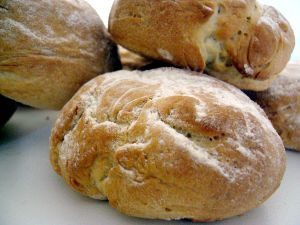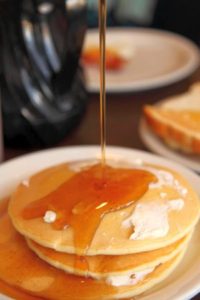1. A simple agapé meal based on the Jewish seder meal
 This fabulous activity helps us all to understand the origins of the last supper and the connection between the Jewish Passover and communion. The meal is not a re-enactment of a simple seder meal (the Jewish name for the Passover feast), it is meant just to illustrate and help all to imagine what Jesus was doing during the Passover meal on the last night of his life on earth.
This fabulous activity helps us all to understand the origins of the last supper and the connection between the Jewish Passover and communion. The meal is not a re-enactment of a simple seder meal (the Jewish name for the Passover feast), it is meant just to illustrate and help all to imagine what Jesus was doing during the Passover meal on the last night of his life on earth.
Allow 90 minutes for this session and explain that after you’ve made the bread together for the meal (20 minutes), you will all then share in the telling of the story as a form of role play – with parts for at least seven people taking a role.
This all-age meal is usually celebrated as part of a normal all-age family gathering in every Jewish family each year, where members of the family (young and old) take part asking simple questions as they go. You don’t have to stick to ‘a father’ reading the ‘father’s’ part (and so on), but make sure there are more than seven people in your group so that each has a part to play.
You will need: a white tablecloth; candles; bread mix for tear and share bread; a little flour; baking trays; small pieces of cooked lamb; a large goblet of ‘wine’ (grape juice) and some small glasses for each person if you don’t want to all drink from the same goblet; Matzoh crackers (found in the kosher section of most supermarkets); horseradish sauce (extra hot); fresh parsley; grapes; script cards containing each person’s words for the seder meal; a goody bag to take home containing a candle, a Matzoh cracker, a radish (a salad one will be fine), a picture of a lamb, a bread roll and a small carton of red fruit juice.
Follow the script found in Margaret Withers and Tim Sledge, Creative Communion, BRF, 2008.
2. Food for the journey – eating in
 This is a wonderful creative approach to explaining the importance and centrality of sharing communion regularly together without taking it for granted, using Margaret Withers’ and Tim Sledge’s excellent book Creative Communion, BRF, 2008. Start by inviting everyone to imagine that they have as much money as they want to spend on a meal, and they can have two types of food. What would they dream up?
This is a wonderful creative approach to explaining the importance and centrality of sharing communion regularly together without taking it for granted, using Margaret Withers’ and Tim Sledge’s excellent book Creative Communion, BRF, 2008. Start by inviting everyone to imagine that they have as much money as they want to spend on a meal, and they can have two types of food. What would they dream up?
Drawing upon on 1 Corinthinans 11.23-29, which were the words that Jesus used at the last supper, there is an explanation and opportunities for discussion based around the Eucharist (which means thanksgiving). Use the short Eucharistic Prayer H in Common Worship.
Additional creative activities:
The big frieze
An artistic scroll expressing in art and drawing what is going on in the Eucharistic Prayer which could be unfolded as the prayer progresses.
Remember, re-member
The opposite of remember is not ‘forget’, it’s dis-member (to pull apart). Illustrate this by making a jigsaw template of a communion setting. Invite everyone to help colour in the picture, then back it onto card and cut it into large irregular pieces. When bringing the different gifts to the table, bring up the pieces of the jigsaw that represents the Body of Christ as we form the shape of the picture on the table.
Other activities include
Baking bread; loose juice; Eucharistic Prayer stopwatch.
For more ideas, go to Barnabas in Churches.
